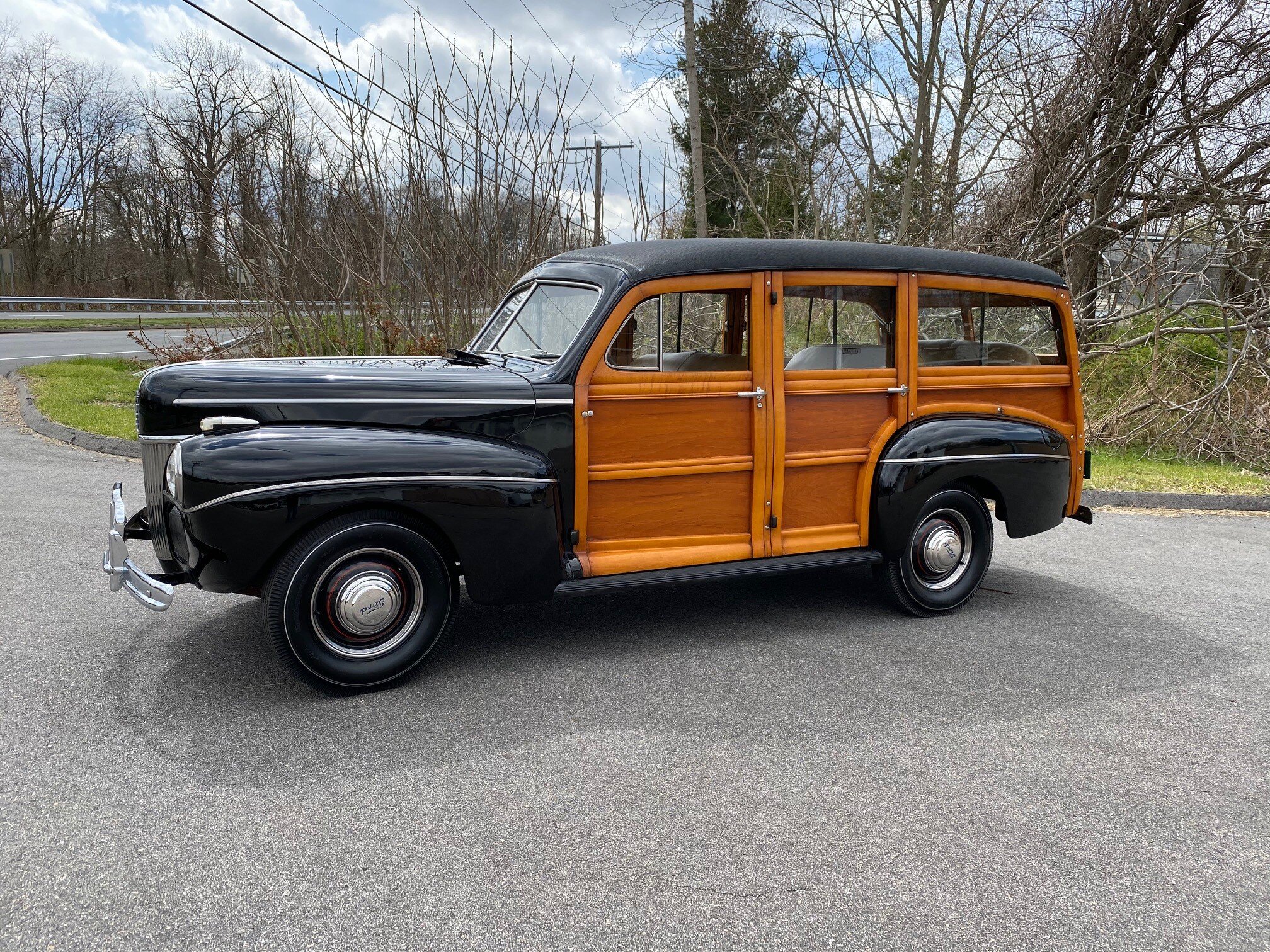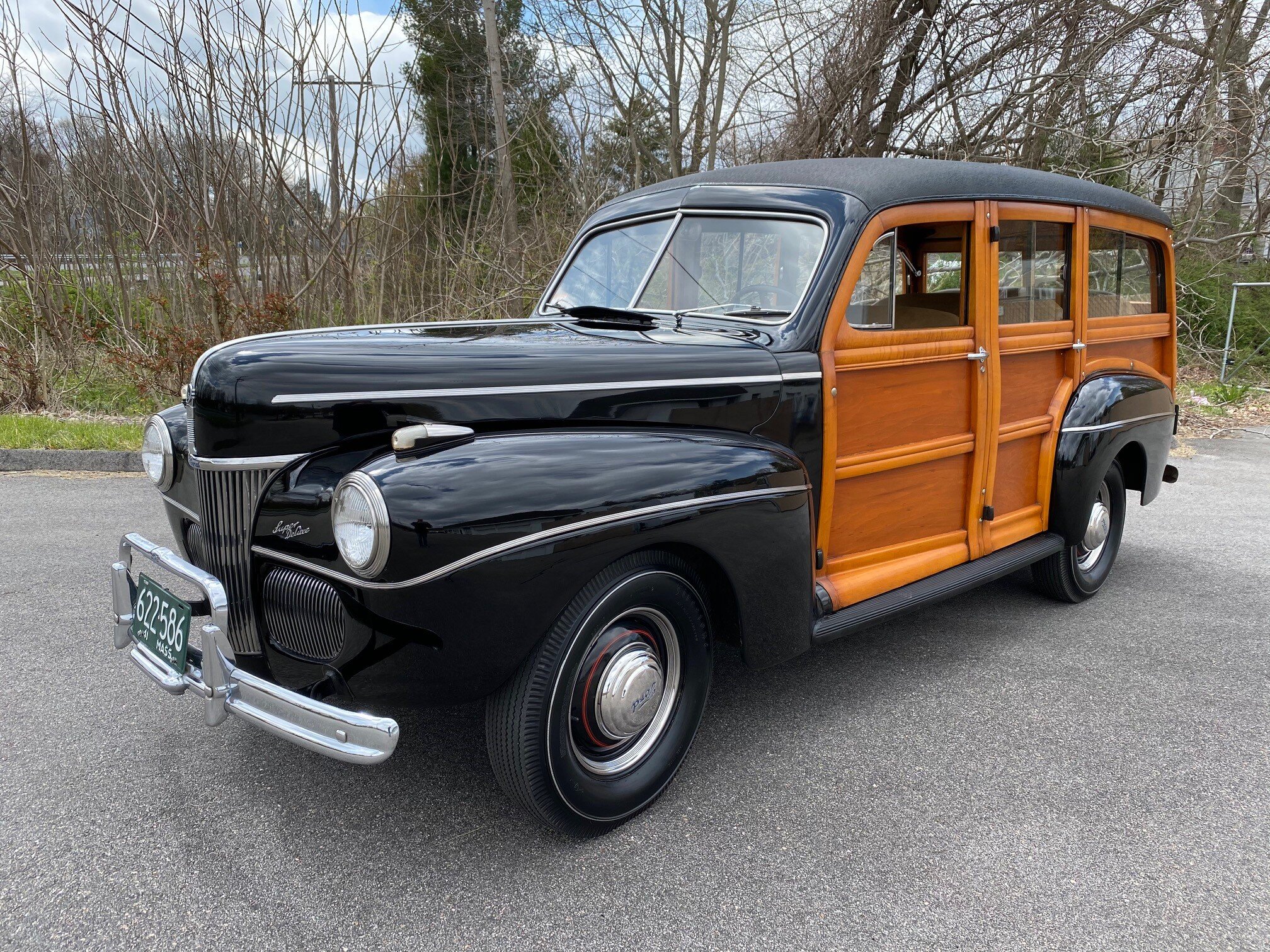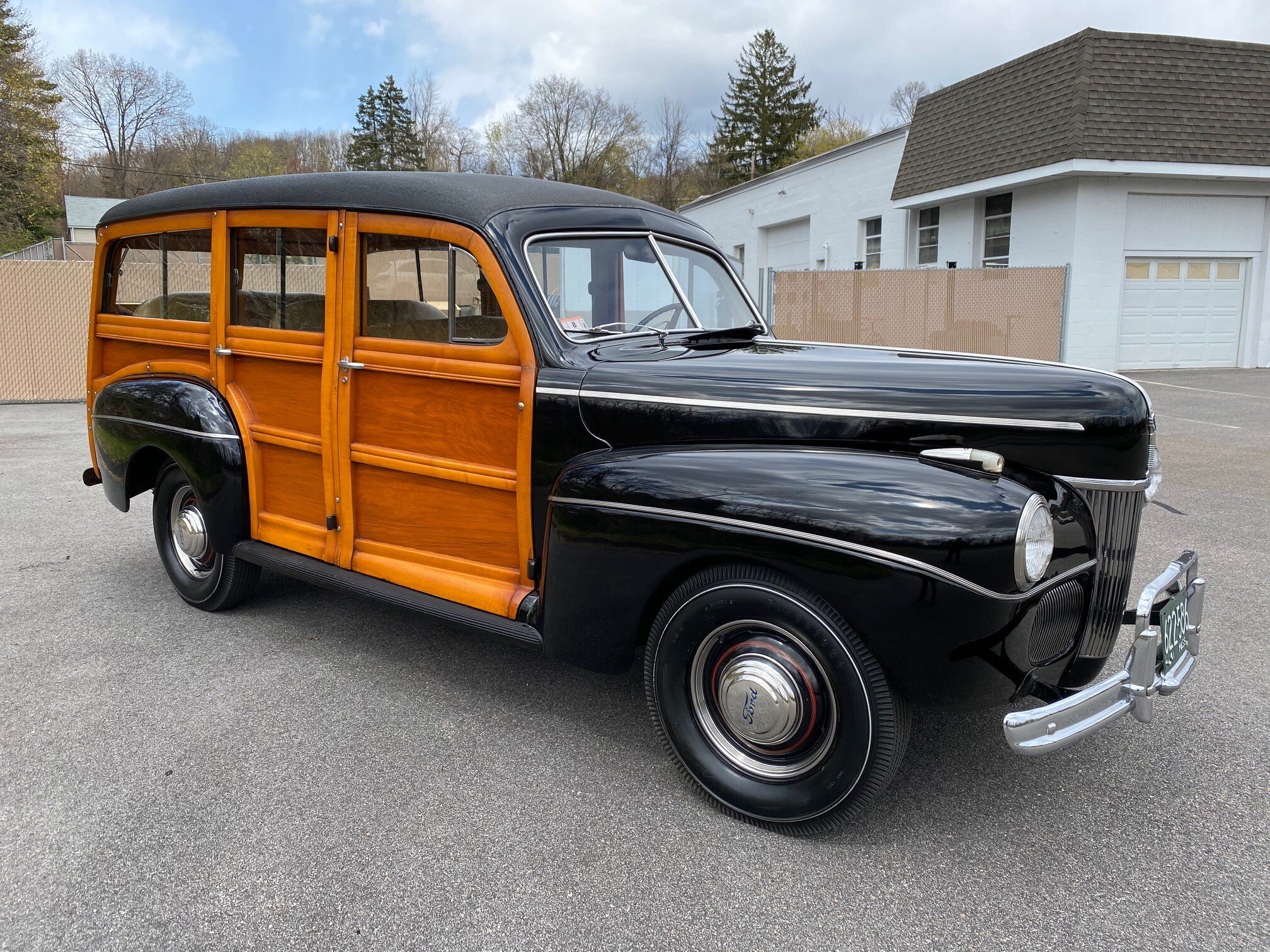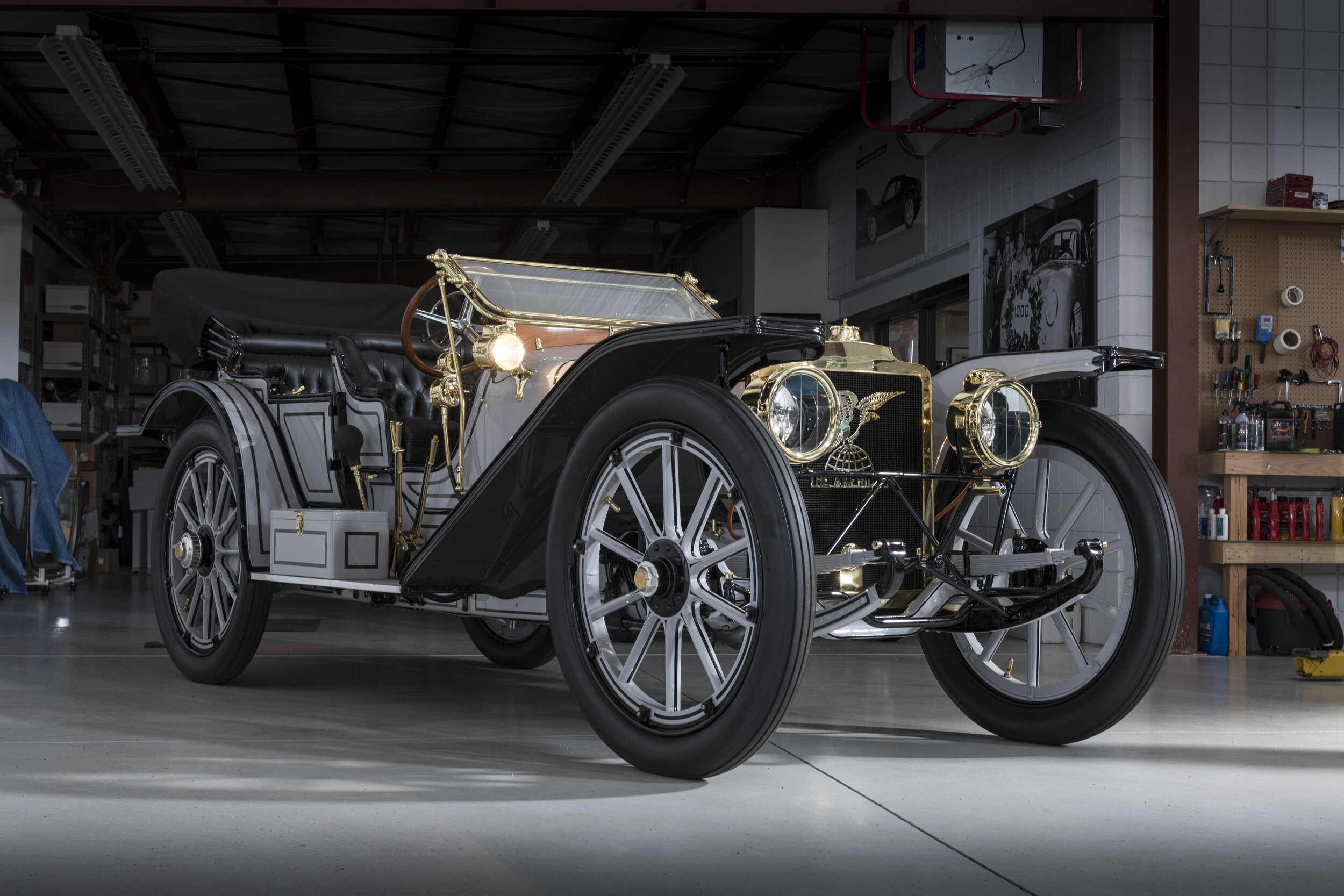1941 Ford Super Deluxe Woody Wagon







Lights: Sealed Beam Headlamps, Flush With the Body
1940 was the first year for standard sealed beam headlights. All U.S. production vehicles had switched to a common headlight size and shape, with two 7 inch round lamps on each vehicle. Note that each lamp is a "dual filament", meaning that the same sealed beam lamp serves as both low beam and high beam. Very little changed over the next 20 years.
The 1941 Ford Super Deluxe Woody represents when innovation and standardization came together. This Woody was equipped with the newly patented glass sealed beam headlamp, the safest and most effective headlights of the time.
While the shape and intensity of early 1940’s headlamps standardized, designers devised new ways of using headlamps to influence a car’s design language. Headlights on all new Fords were now flush with the body to reduce drag. Other brands quickly followed suit, turning a strict regulation into an effective and stylish solution.
Originally created as a cheaper utilitarian vehicle, the Ford Woody quickly turned into one of the most iconic and recognizable cars of all time. This car was purchased in Hartford, Connecticut in 1941, and was driven by a chauffeur for a West Hartford family. It was given to the chauffeur upon his retirement in the 1960s, and was purchased from the chauffeur’s grandson by Wayne Carini in 2016. The car has gone only 50,000 miles in its 80 years, and is in a remarkable state of preservation, never having been restored.
In the earliest days of motoring, aerodynamics was not a primary focus of automobile engineers. As the 1920s approached, cars became more efficient, leading designers and engineers to craft new ways to make their vehicles more streamlined. Aerodynamics grew into more of a concern in the 1930’s, with wind tunnels and other forms of efficiency testing more readily available. With these advances, a shift had begun to take place in the industry: boxy, upright designs were left behind, welcoming in a new generation of design and innovation.
The first woodies were manufactured in the early 1900s by local coach makers, who purchased chassis without bodies, and constructed the bodies out of wood themselves. The coach makers would then sell these bespoke creations to local business owners, oftentimes to nearby hotels and resorts, who would use them as small buses to transport guests to and from the local train stations. This early usage led to the vehicles being known first as “depot hacks,” referring to the train depots and the old horse-drawn carriage nickname of “hack.”
The woody continued to grow in popularity, until finally in 1929, Ford released its own version. Ford marketed the cars as all-purpose utilitarian vehicles with low initial cost, as wood-bodied cars were less expensive to build than steel-bodied cars. All woodies were made with Ford-only parts, which was rare for most vehicles. In the late 1940s, auto manufacturers came to the realization that woodies, though still popular in appearance, were no longer a viable option for their low-income buyers, with the inconvenience of cleaning and maintaining the wood, so they began utilizing wood-paneling as an option for their higher-end models.
Specifications
Engine: 3.62L Flathead V8 (221 C.I.)
Horsepower: 85 hp
Transmission: 3-speed Manual
Lights: Sealed Beam Headlamps, Flush With the Body


















